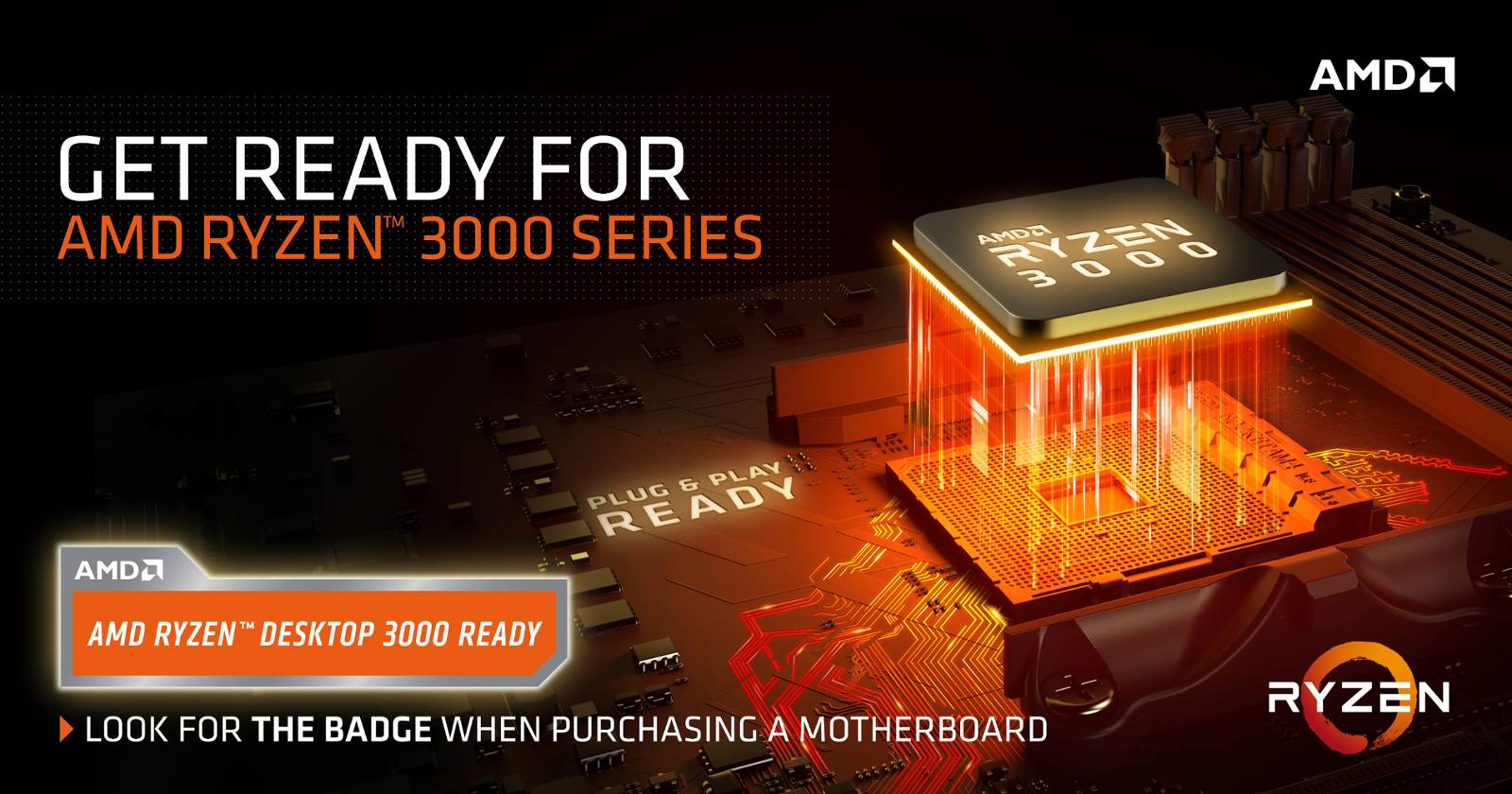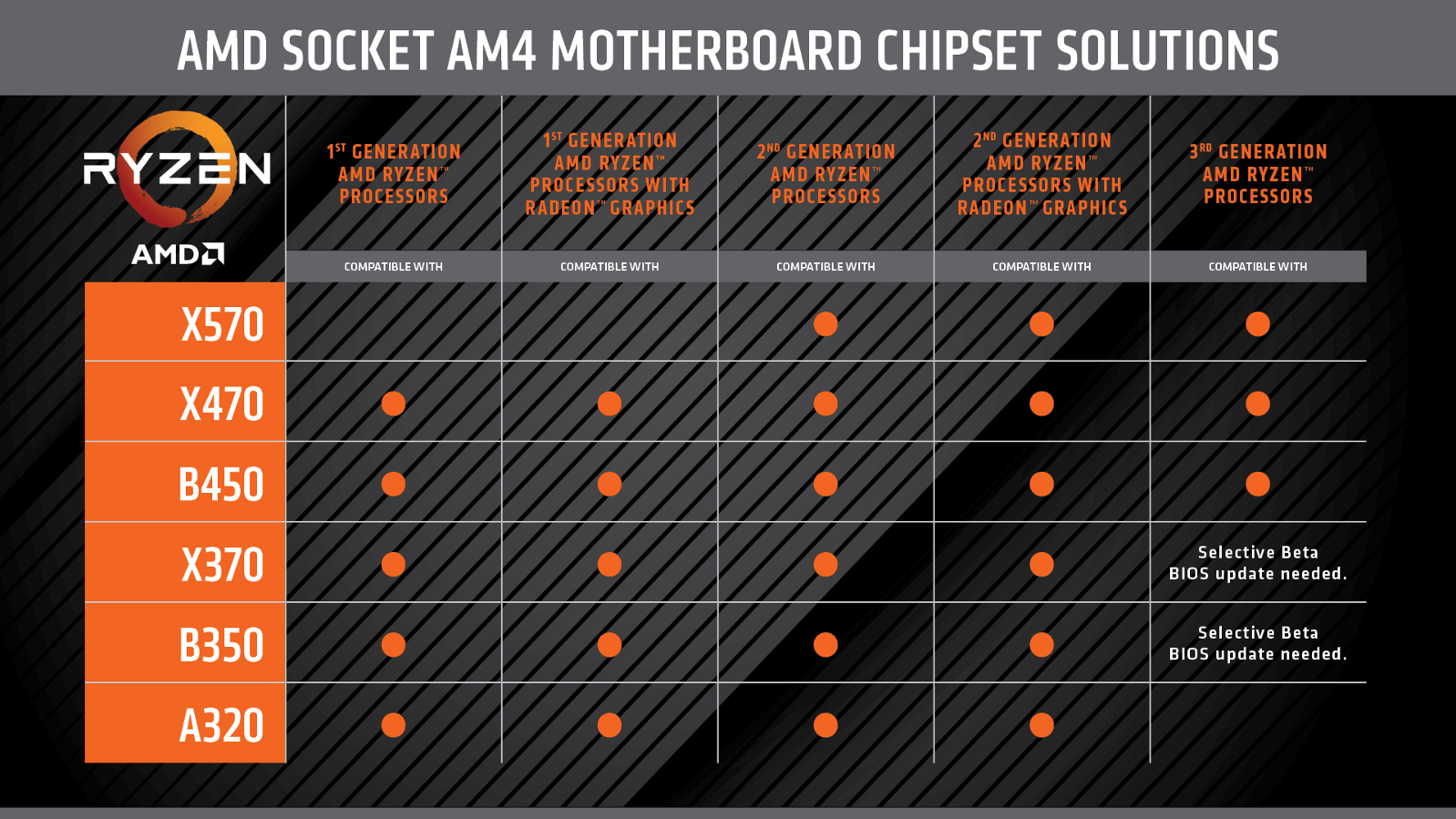How to Ensure Your Motherboard Will Support a Ryzen 3000 CPU
Just an update away.
If you’re looking at Black Friday deals for your next build and find a good Ryzen 3000 deal, you may notice that not every motherboard with AMD’s AM4 CPU socket will work out of the box. So when you’re mixing and matching motherboards and processors, it’s important to ensure that the two will work together.
The issue is that while AMD is supporting its AM4 socket for the latest processors, some older motherboards need a BIOS update. Sometimes, to do that, you need another AM4-processor, creating an odd chicken and egg problem. And it’s not fun to rip open your parts only to find out that you can’t use them together right away.
Look for a Ryzen Ready badge
When buying a new motherboard, look for a badge that says “AMD Ryzen Desktop 3000 Ready” on it. These motherboards will work with the latest AMD Ryzen processors out of the box, no updates needed.

AMD has a matrix that shows which of its processors work with which motherboards, and which platforms definitely need an update. If you’re getting a Ryzen 3000-series processor, X570 motherboards should all just work. Older X470 and B450 as well as X370 and B350 motherboards will probably need BIOS updates, and A320 motherboards won’t work at all.

Check vendor descriptions and user comments
The stores selling the motherboard should list compatibility. (If they don’t, the matrix above is a good start). Local stores may open boxes and perform the upgrades, but it’s possible that online stores aren’t doing that. Many online stores will list a motherboard as “Ryzen 3000 compatible” but that doesn’t necessarily mean that it has been updated to the necessary BIOS version to enable that compatibility. So unless the description is crystal clear, user reviews may help.
If you check the user reviews, you may see users talking about whether the motherboard they bought needed a BIOS update to use Ryzen 3000 series CPUs. Of course, it’s possible that if a user said they needed a BIOS update in a comment from several weeks ago, that you won’t need one on a unit you buy today, but it’s safer to assume that the situation hasn’t changed.
Use BIOS Flashback
Some motherboards have the ability to update from a USB stick, which is called BIOS Flashback. You’ll have to check the instruction manual for your motherboard to see if this works. Others have an update button on the back, though you won’t find this on cheaper motherboards. But in either case, some motherboards don’t even need a CPU to update.
Get Tom's Hardware's best news and in-depth reviews, straight to your inbox.
Consider AMD’s Short Term Loan Program
If you buy a motherboard and it hasn’t been updated, doesn’t support BIOS flashback or have a button to update without a chip, you’re not out of luck. AMD has a “short term processor loan boot kit.” That consists of a Athlon 200GE processor and a cooler for 10 days so that you can make the update and install your own CPU. You can find out more details, including how to sign up for the program, here.
This is the most complicated option, as it requires filling out a warranty claim, serial numbers and receipts. You’ll also lose some time on your build waiting for it to come in the mail. But it’s free, so it’s a good last-ditch option.

Andrew E. Freedman is a senior editor at Tom's Hardware focusing on laptops, desktops and gaming. He also keeps up with the latest news. A lover of all things gaming and tech, his previous work has shown up in Tom's Guide, Laptop Mag, Kotaku, PCMag and Complex, among others. Follow him on Threads @FreedmanAE and BlueSky @andrewfreedman.net. You can send him tips on Signal: andrewfreedman.01
-
Wolfshadw In addition to the X570 series motherboards, the MSI B450 "MAX" series (boards with the word "MAX" in the name) are Ryzen 3000 compatible out of the box.Reply
-Wolf sends -
Sanguipax My Asus Prime B450M-A/CSM also sports a Ryzen 3000 Desktop Ready printed on the box. I'll report back once I pick a CPU.Reply -
angel0000300 if its compatible "amd ryzen desktop 3000 ready" i only have to turn it on and forget that i have to update bios first. just install windows and other stuff ? tell me im confused and i dont to harm the mobo.Reply